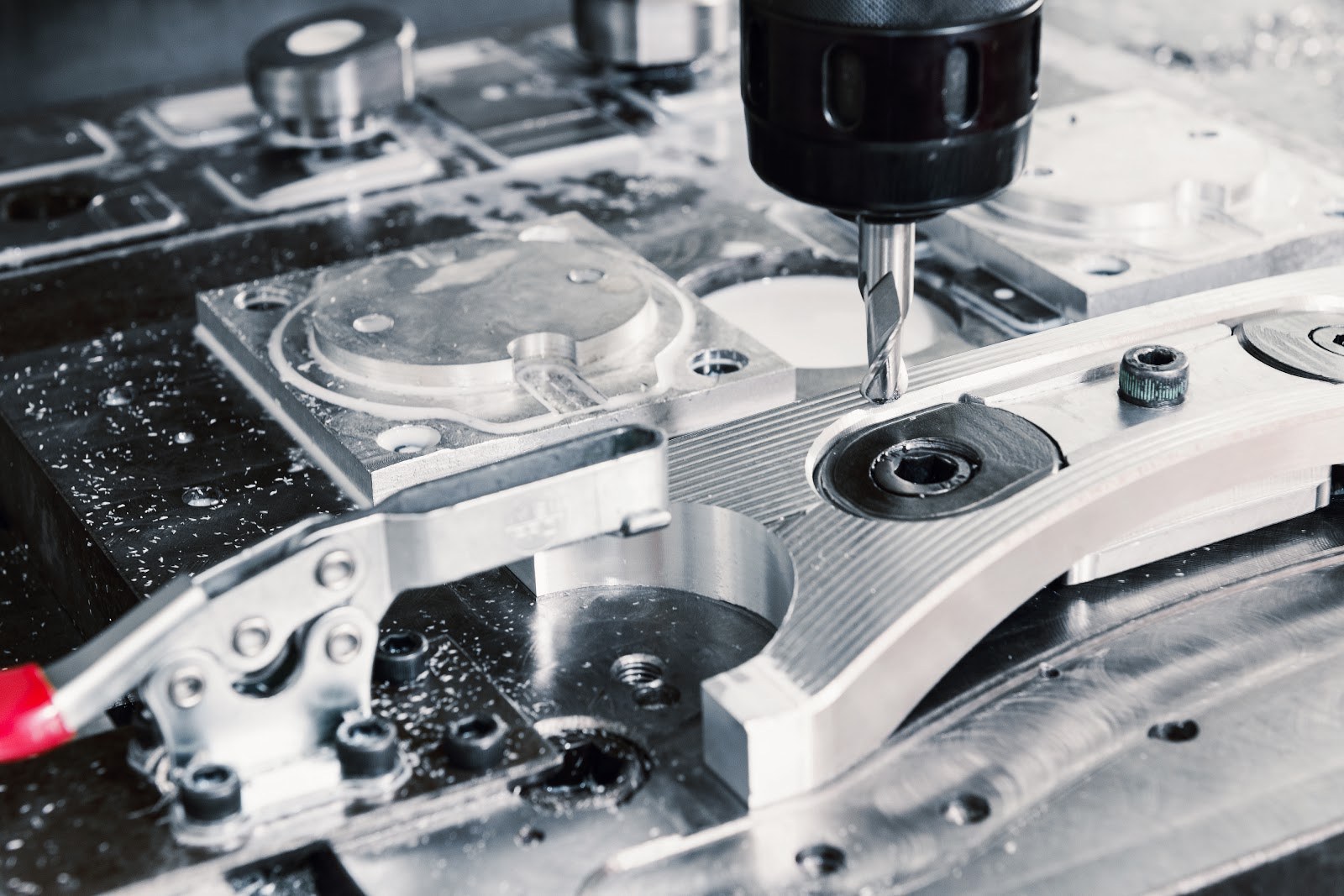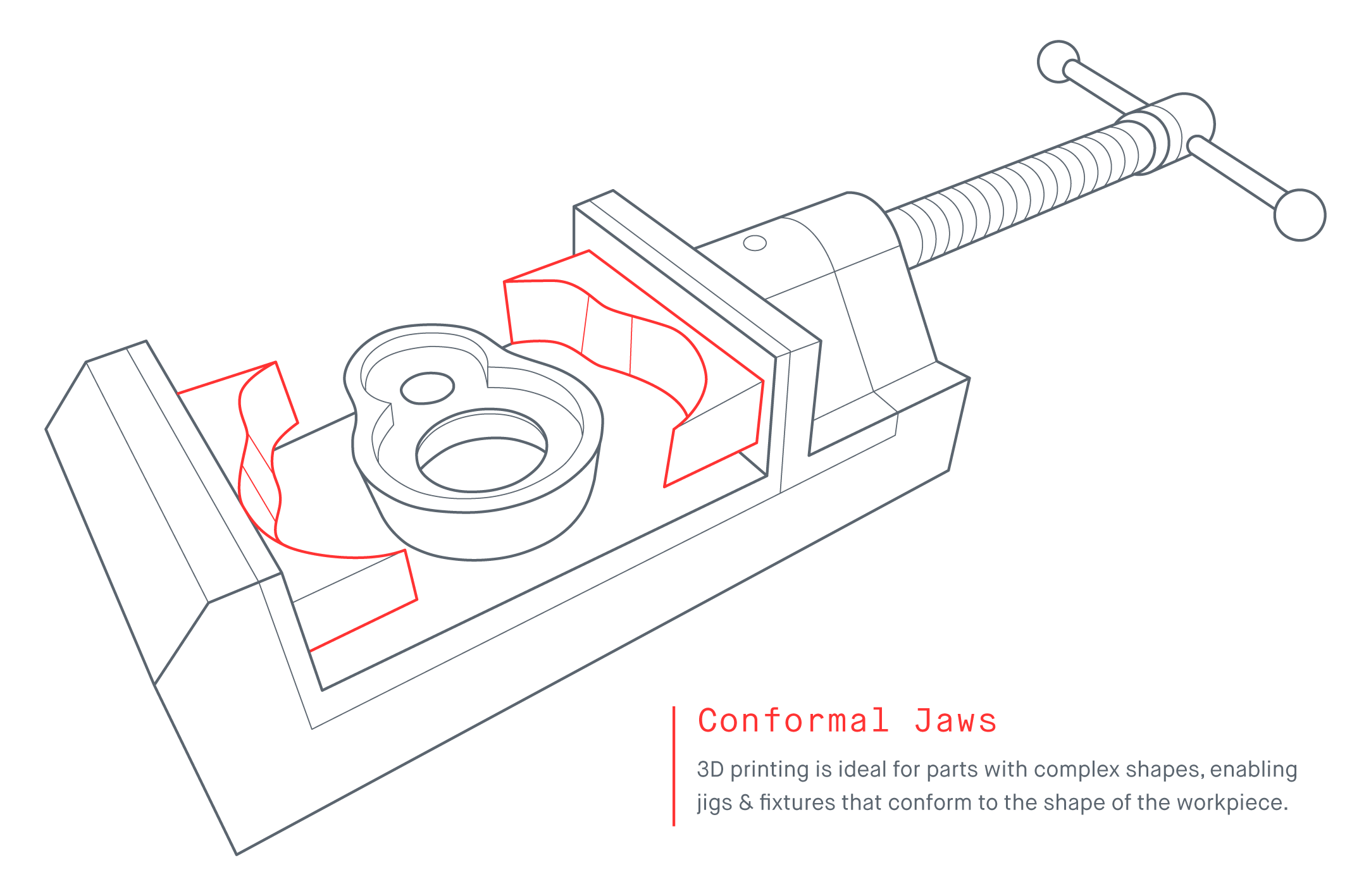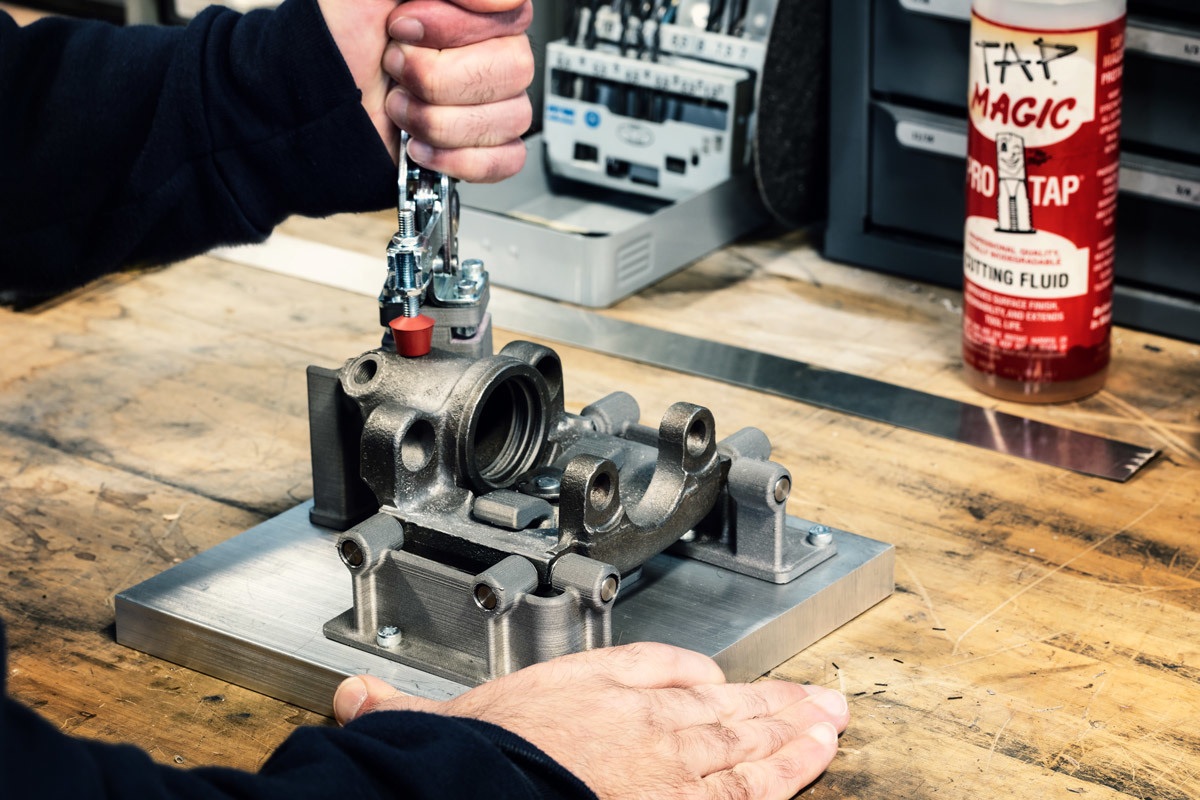Metal 3D printing for jigs & fixtures

Typically, a full production line includes multiple manufacturing operations—broaching or boring holes, welding, assembly, and machining critical dimensions. An increase in production volume also increases the need for consistency and reliability across all operations to ensure parts and assemblies perform as intended. Designed for a specific part or task, custom jigs and fixtures are critical to ensuring repeatability and precision at each stage of manufacturing to render parts that are optimized for their application.
Often, in order to manufacture custom jigs and fixtures, engineers are forced to piece together off-the-shelf components as a temporary solution while they wait for the custom tools to be machined and assembled. In addition to long lead times, traditional manufacturing can present significant limitations to the design—prohibiting the development of a custom part that is better suited for the job.
In-house metal 3D printing allows engineers to produce jigs and fixtures quickly using a design optimized for the specific need. And the ability to produce replacement parts on-demand is critical to operational efficiency.
3D printing conformal jigs & fixtures
Conformal jigs and fixtures are designed to adhere to the shape of the part that is being manufactured while enabling an even distribution of the clamping forces. Often, this includes intricate designs that are difficult—or nearly impossible—to machine.

One of the key benefits of additive manufacturing is design flexibility. With 3D printing, part cost and fabrication time do not increase with design complexity, so custom jigs and fixtures that meet the needs of the application are easier and cheaper to produce. Additionally, processes like Bound Metal Deposition™ (BMD™) enable print-in-place assemblies, part consolidation, and part light-weighting with the use of closed-cell infill for lightweight strength.
Bringing the benefits of metal 3D printing in-house reduces lead times associated with the production of custom jigs and fixtures—compared to machining or leveraging a third-party print shop. Manufacturers can more easily prototype parts to further optimize the design and produce replacement parts on-demand so to avoid disrupting the product development timeline.
Metal vs. Plastic
Many jigs and fixtures must be made of metal to comply with the conditions of the manufacturing environment. Plastic parts will distort under high heat or when exposed to abrasives. Metal is much stronger, stiffer, and more durable than plastic so, if it will be subjected to significant forces, metal jigs and fixtures are required to prevent deflection and preserve repeatability.

Alternative metal additive manufacturing methods, like Powder Bed Fusion (PBF), present processes that are too costly due to expensive hardware and materials. Also, they require several secondary operations which add to labor costs and lead time. Even for manufacturers who have PBF machines in-house, using them to produce parts in low volume is too cost-prohibitive and time-consuming to be a viable solution.
The Studio System enables rapid iteration and allows manufacturers produce parts in-house and on-demand at a lower cost-per-part. Designs are optimized for the specific need—enabling the production of custom jigs or fixtures that are built to perform while contributing to an increase in overall operational efficiency.